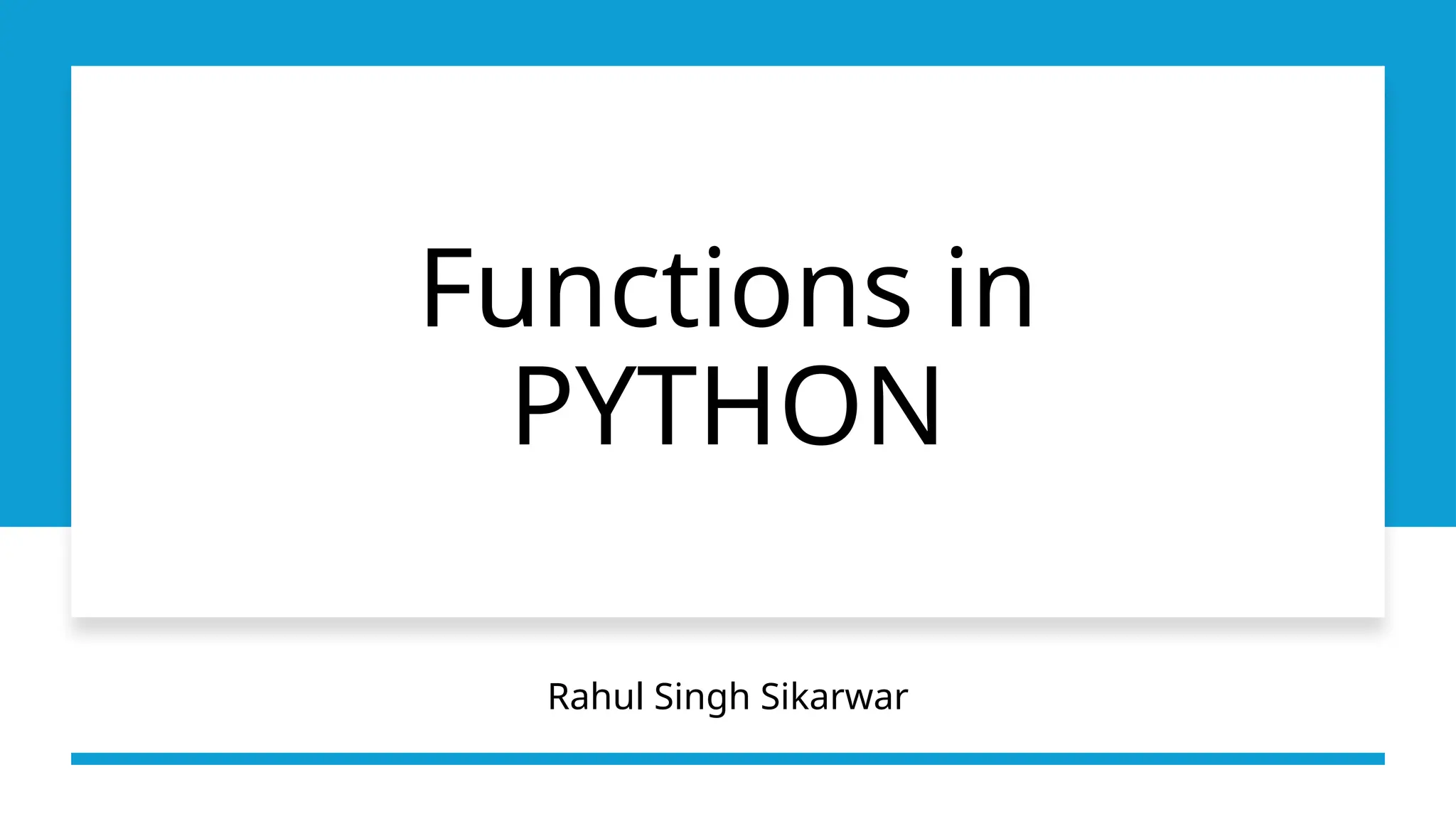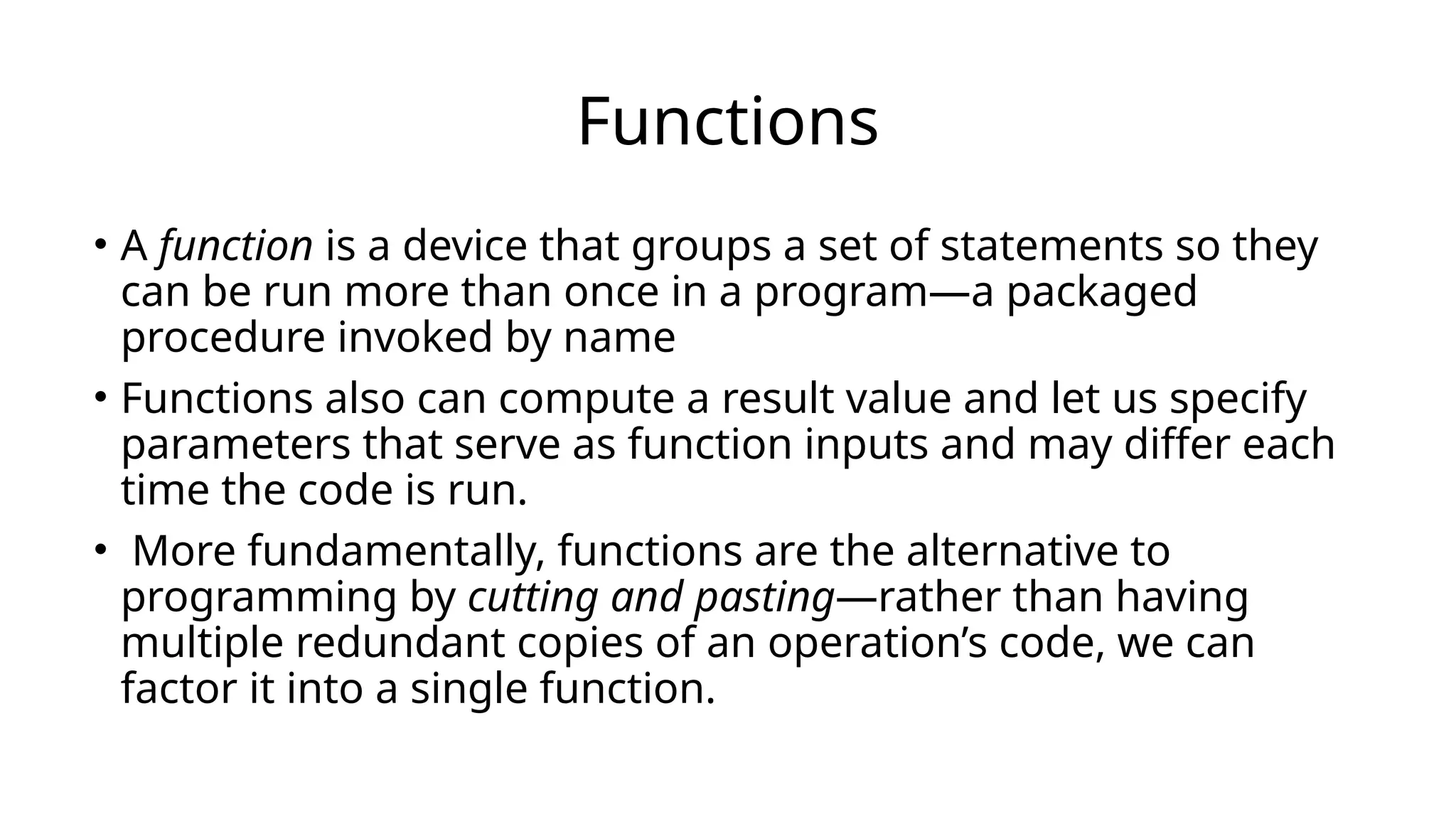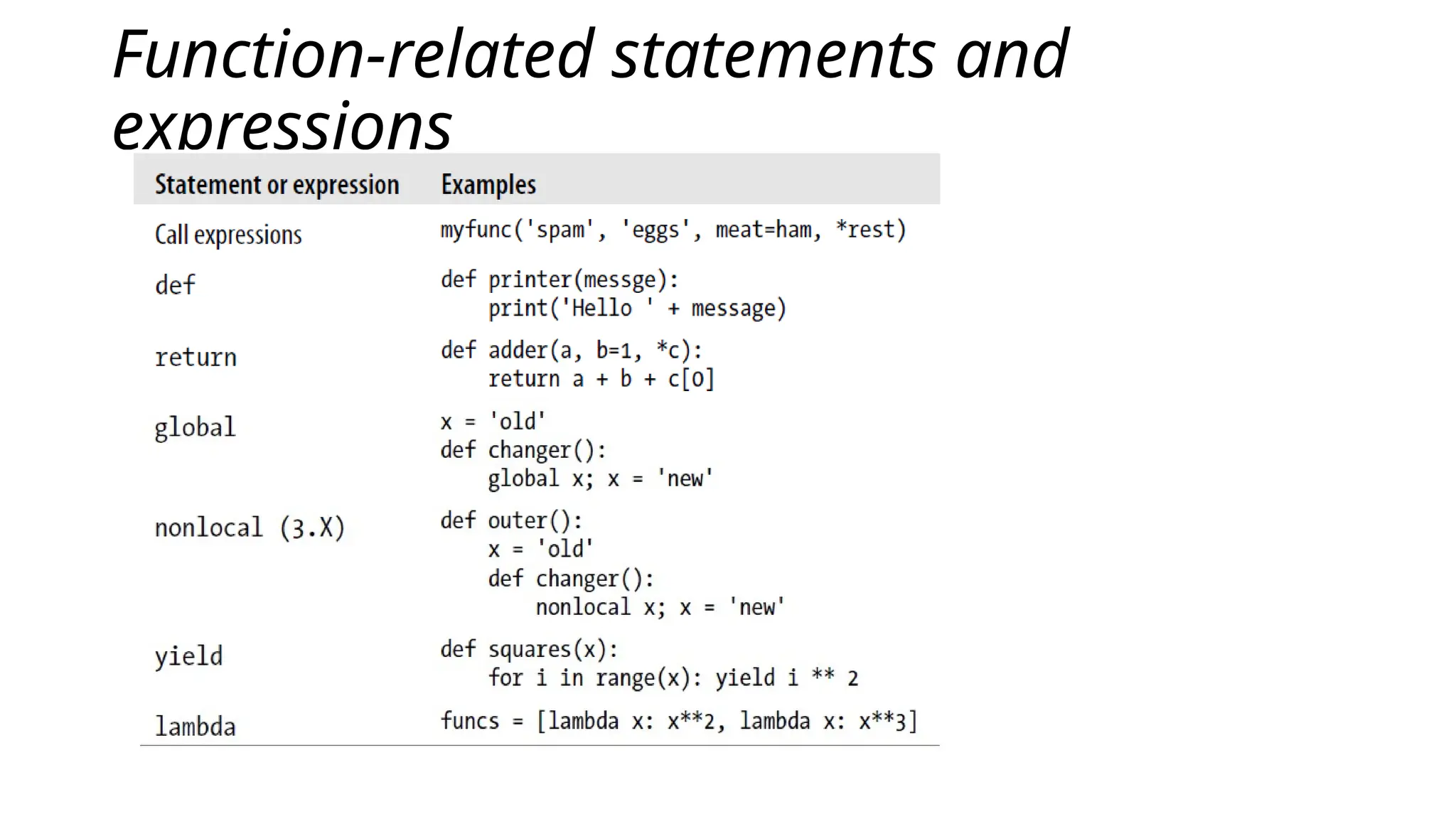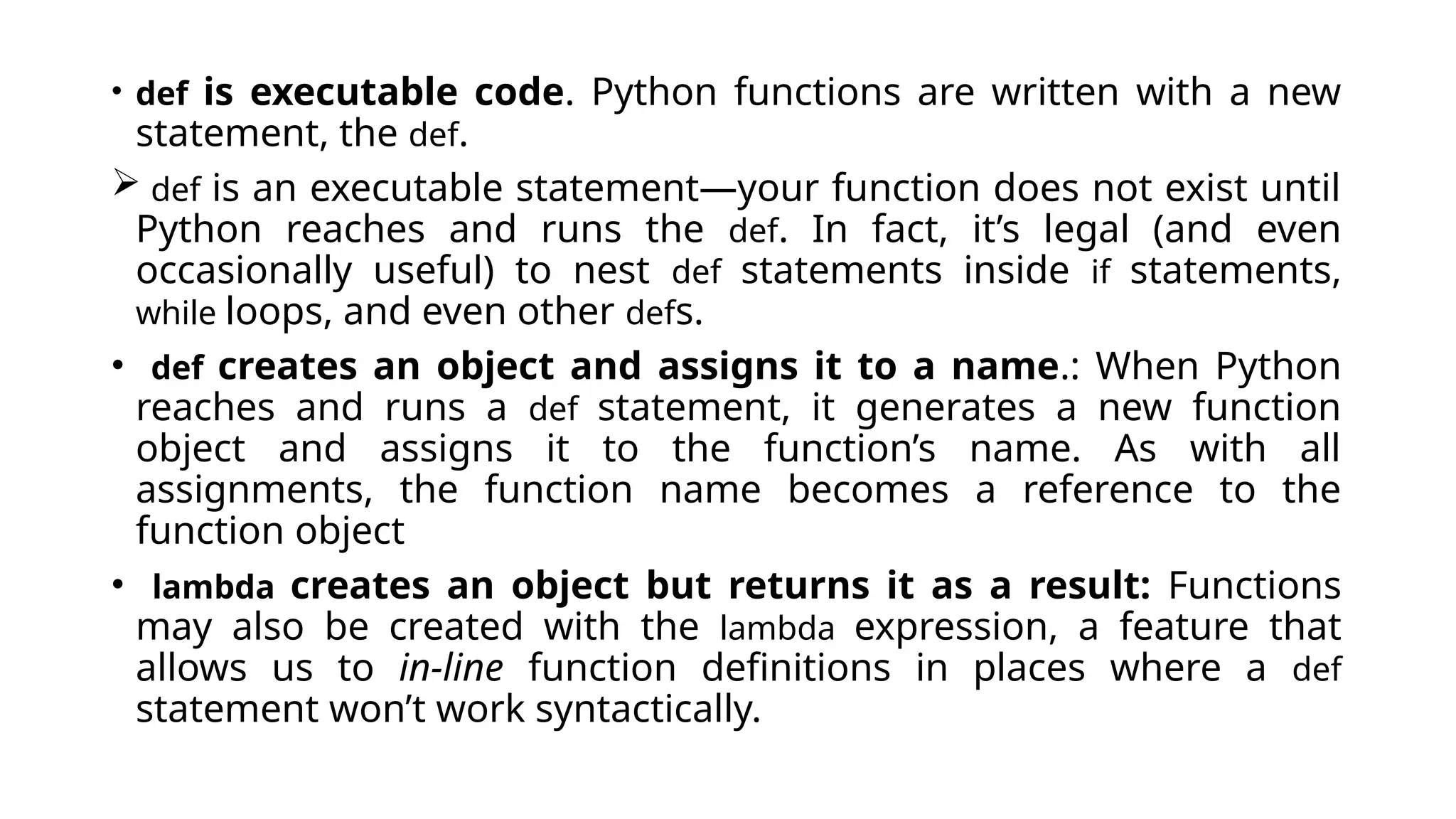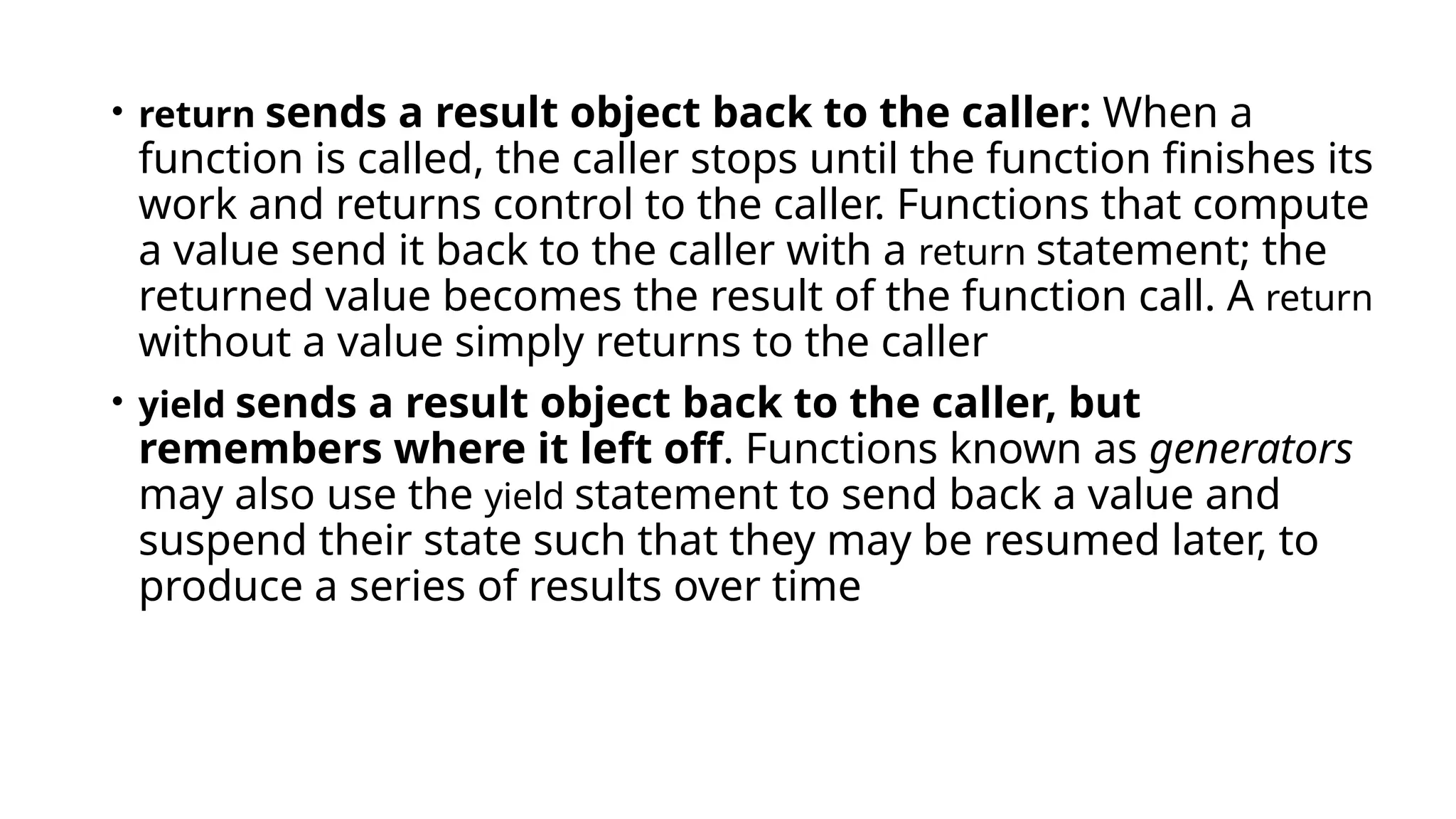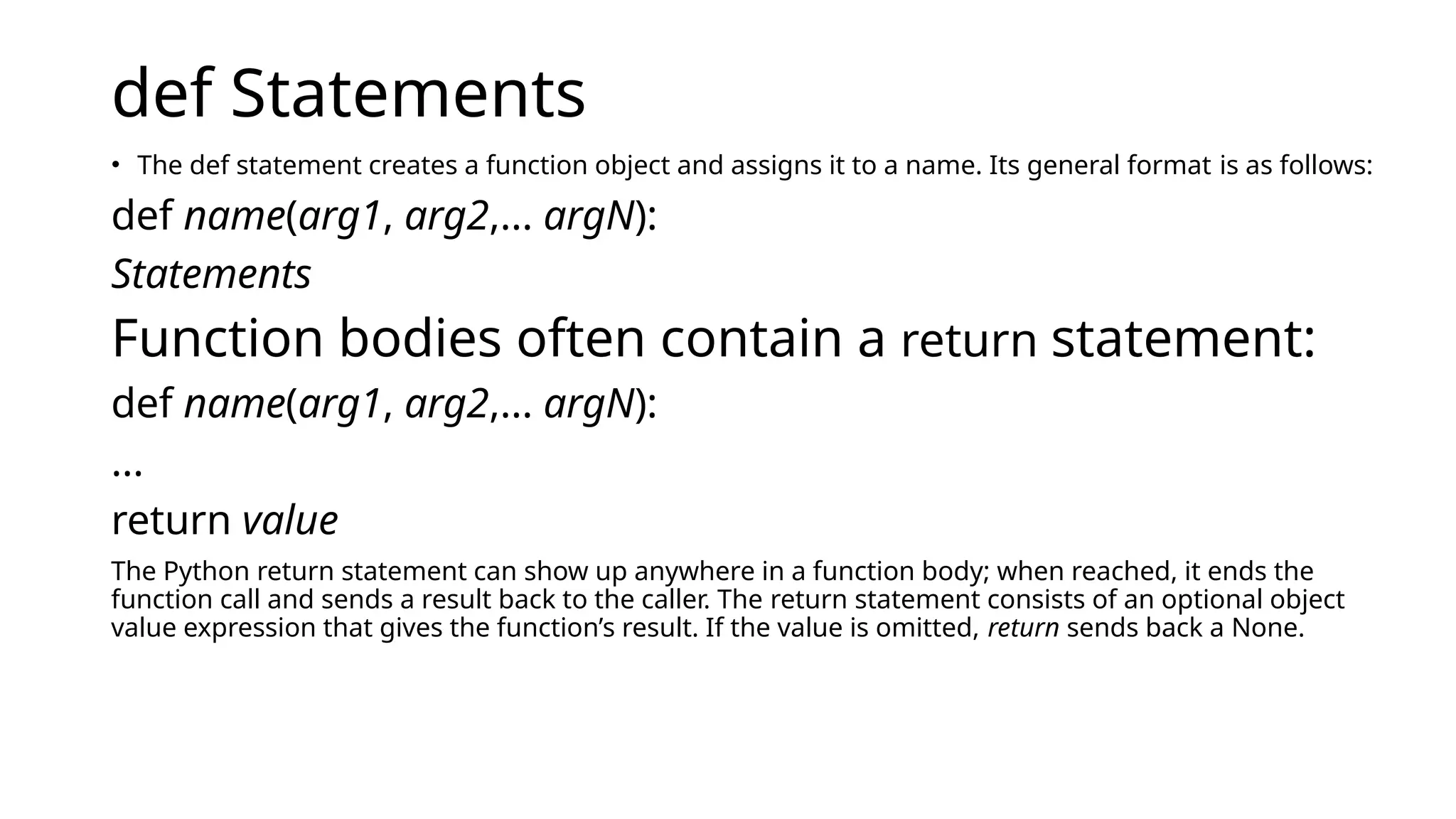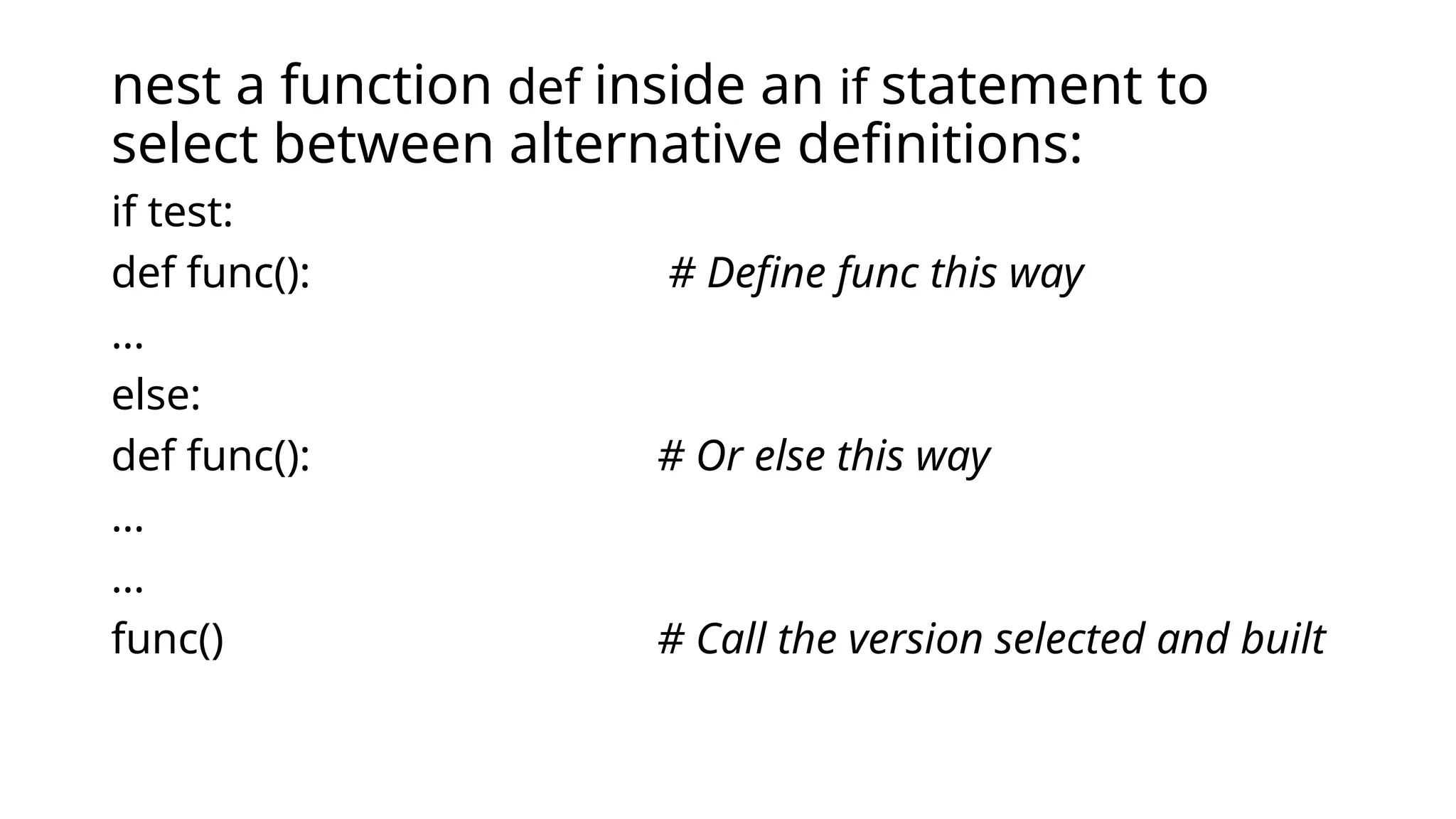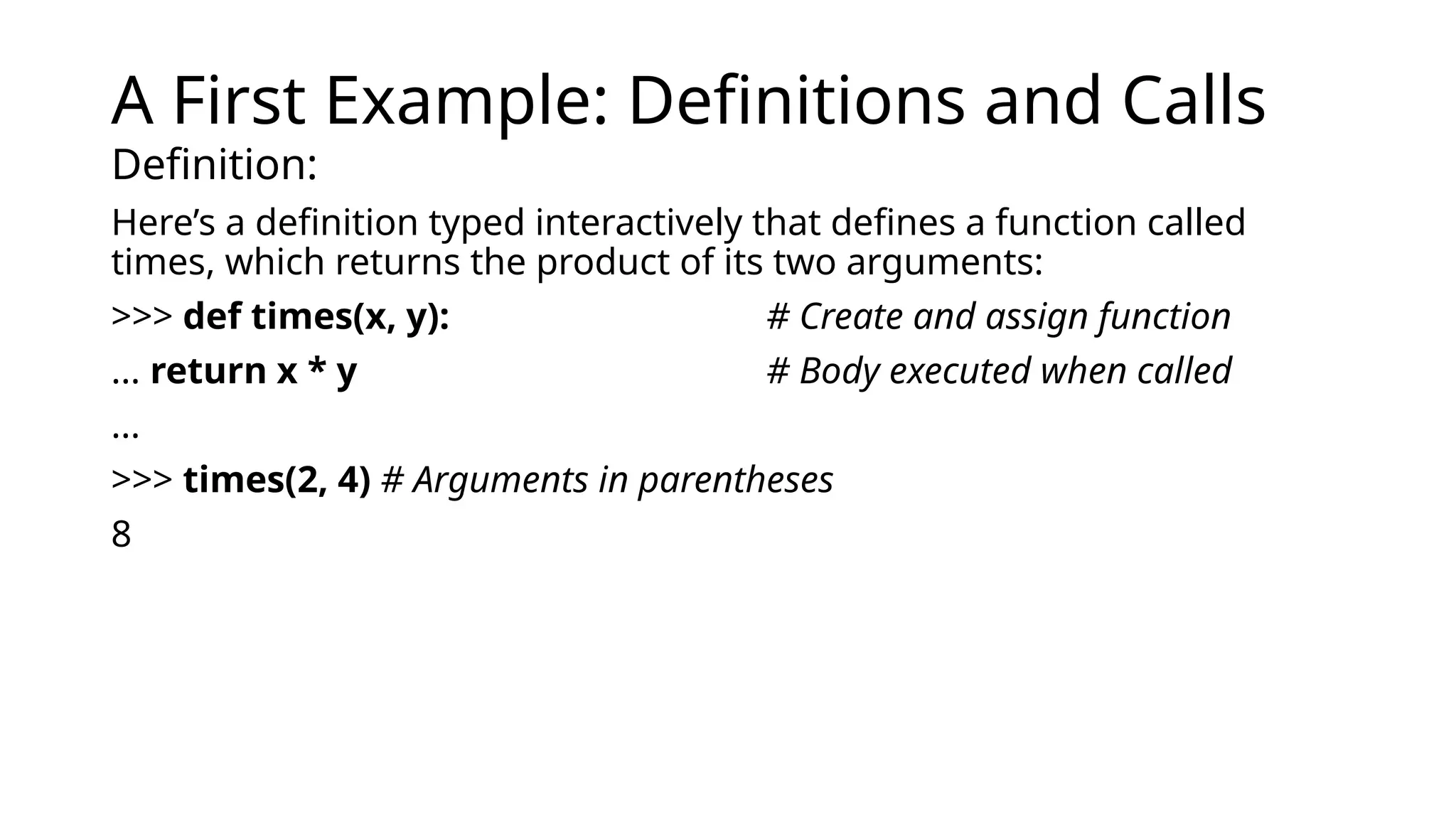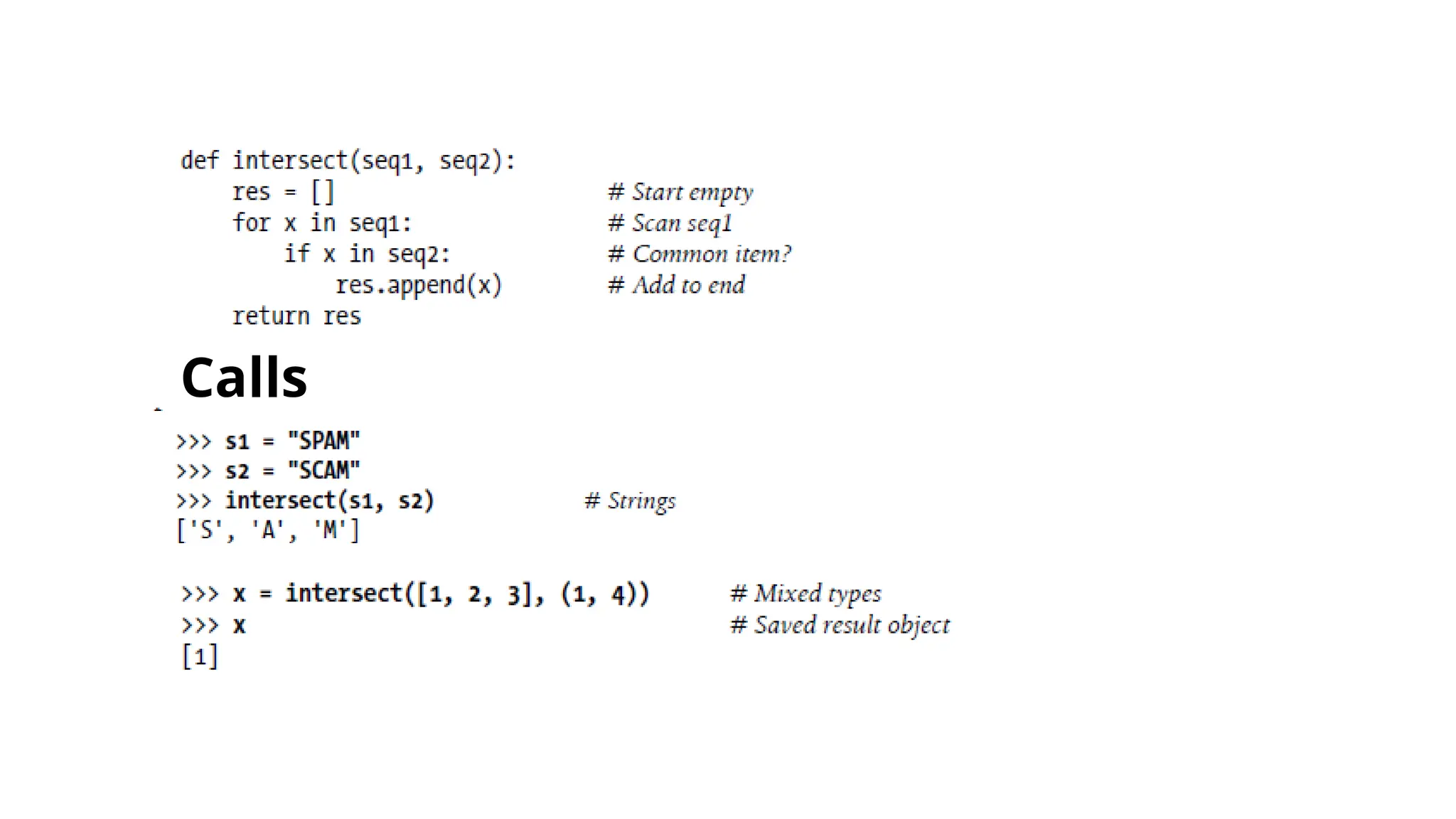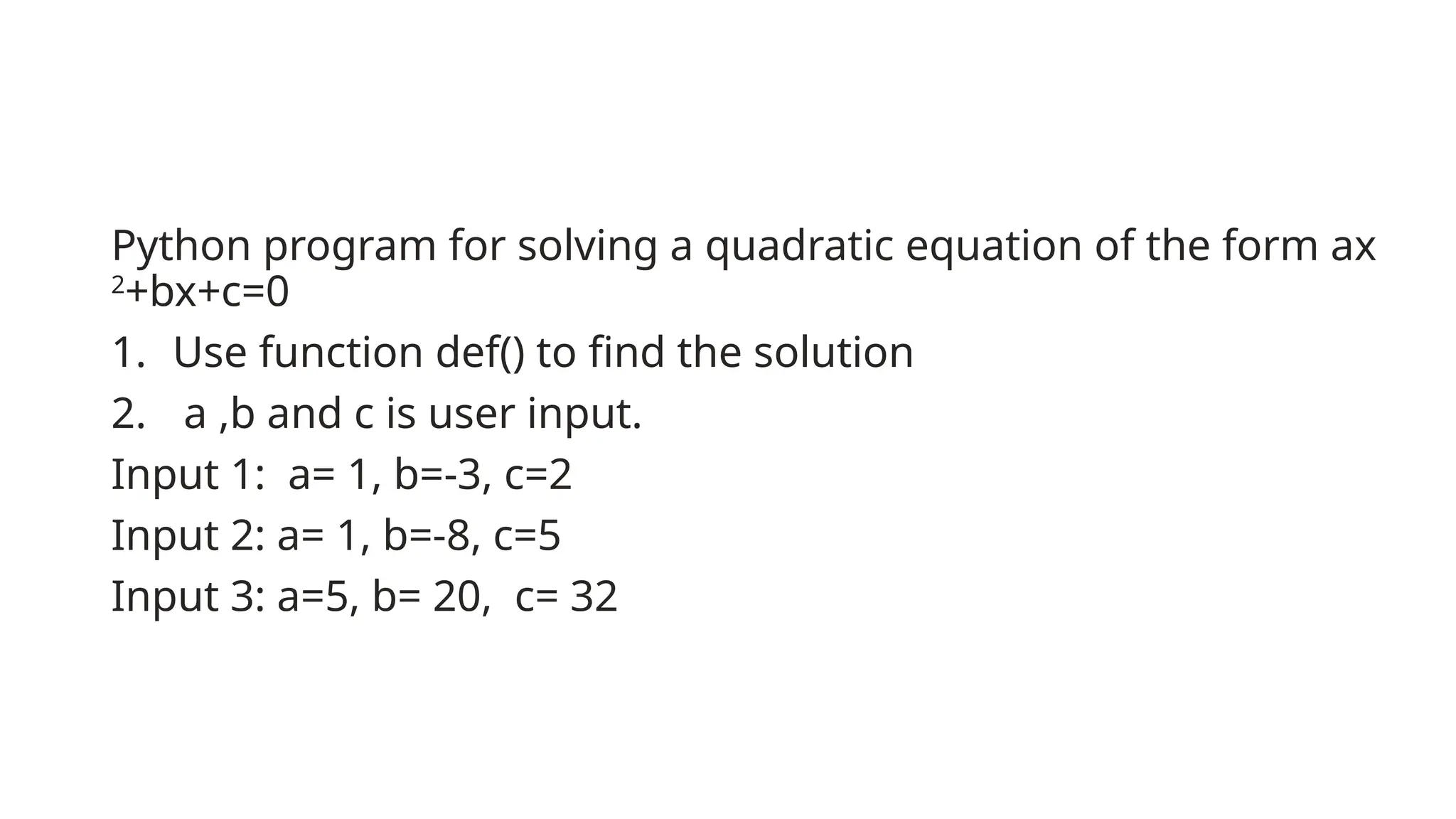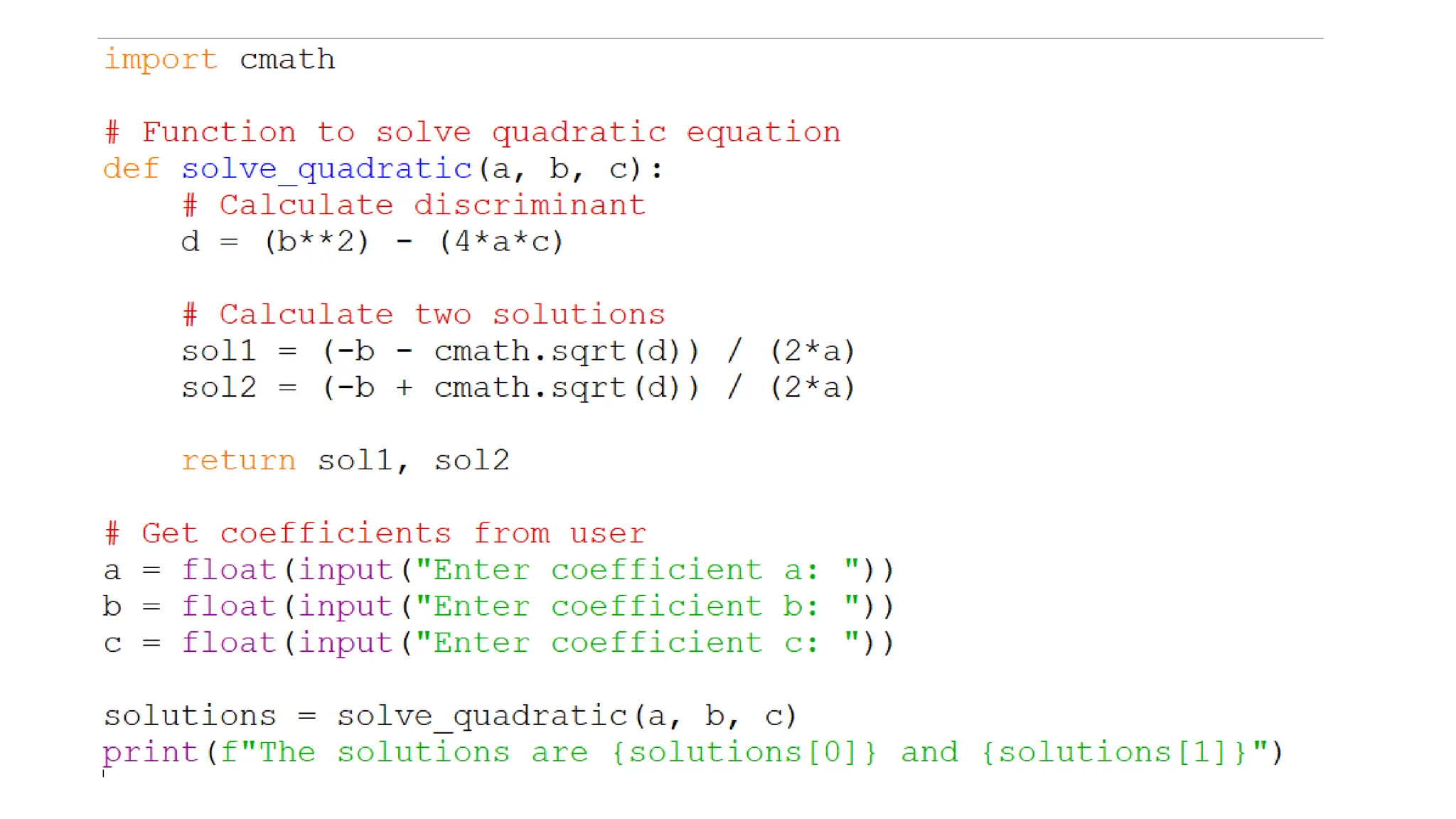The document discusses functions in Python, explaining their purpose to group statements for reuse and minimize redundancy. It details the use of 'def' to create functions, the role of 'return' and 'yield' in handling function outputs, and highlights procedural decomposition. Examples illustrate how to define functions and apply them, such as solving quadratic equations using user inputs.
